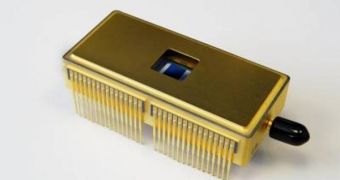In an attempt to innovate the field of modern adaptive optics instruments, French researchers have managed to create the most advanced and sensitive astronomical camera to date, which holds the promise to be able to very accurately compensate for the “atmospheric turbulences” that annoy astronomers so much. While for poets they are a source of inspiration, the twinkle of stars is bad for science, as ground-based telescopes are unable to resolve the finest details on stars or exoplanets millions of light-years away.
The term adaptive optics refers to the methods astronomers use to compensate for the way our planet's atmosphere influences light coming in from distant stars. At this point, high-speed cameras are used, which have the ability to snap tens and hundreds of images per second. The images are then processed via a computer in real-time, but the process is very energy-consuming. The new camera has the ability to make this entire process a lot simpler and more effective.
“The performance of this breakthrough camera is without an equivalent anywhere in the world. The camera will enable great leaps forward in many areas of the study of the Universe,” the Head of the Adaptive Optics department at the European Southern Observatory (ESO), Norbert Hubin, explains. He says that the new device, dubbed OCam, will be a component of the second-generation VLT instrument SPHERE, which will be installed in 2011. Its main purpose will be to take photographs of giant exoplanets orbiting stars in our neighborhood.
“The quality of the adaptive optics correction strongly depends on the speed of the camera and on its sensitivity. But these are a priori contradictory requirements, as in general the faster a camera is, the less sensitive it is,” LAOG expert Philippe Feautrier, who has also been the coordinator for the OCam project, adds. “Plans are now underway to develop the adaptive optics detectors required for ESO's planned 42-metre European Extremely Large Telescope, together with our research partners and the industry,” Hubin shares.
“Thanks to this technology, all the new generation instruments of ESO's Very Large Telescope will be able to produce the best possible images, with an unequaled sharpness,” the leader of the team that built the actual camera, Laboratoire d'Astrophysique de Marseille scientist Jean-Luc Gach, concludes.

 14 DAY TRIAL //
14 DAY TRIAL //